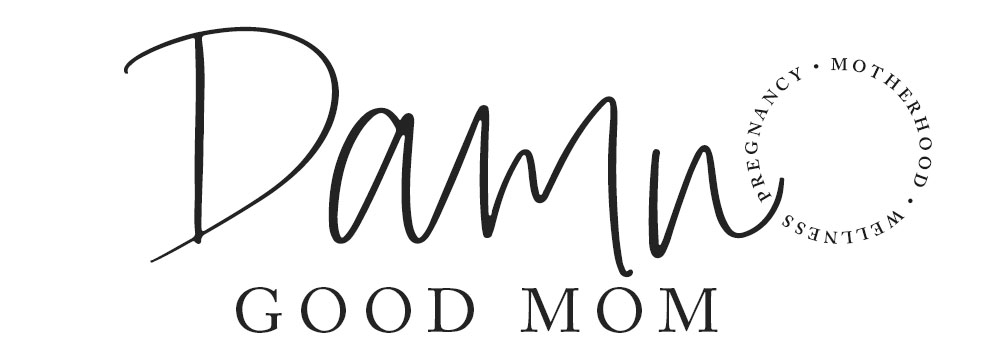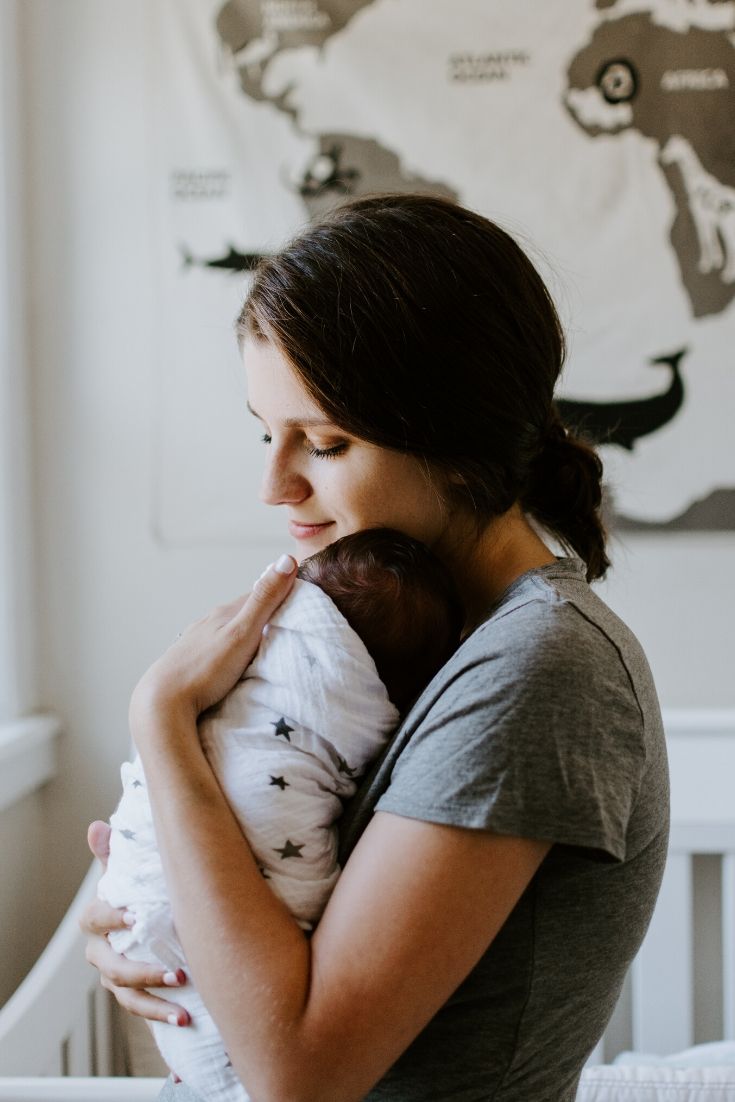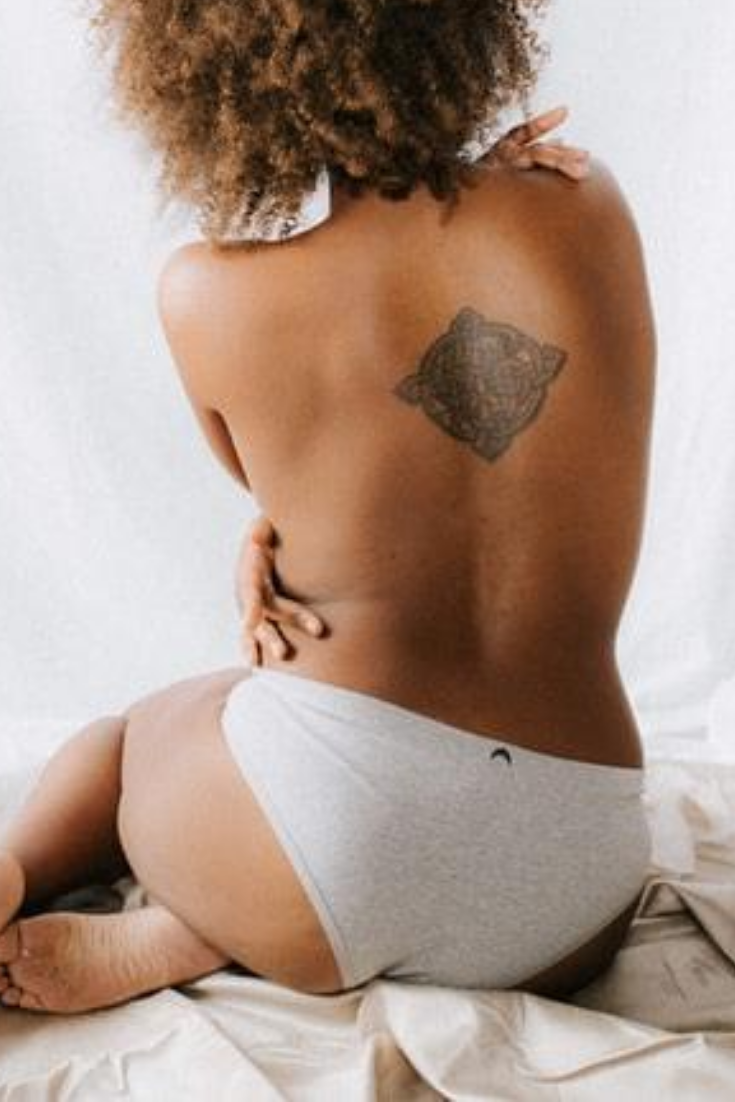In this post, you’re going to learn how to DIY your own postpartum care kit so that you’re ready for life after a baby exits your body.

This post contains affiliate links; for more information, see my Disclosures page.
This post includes information about:
- Products to support healing physical symptoms
- Postpartum care
- Common postpartum symptoms
- And a bit about managing life with a newborn while you heal after birth
Let’s dive right in to the product recommendations.
Healing Postpartum Care Essentials
First, I’ll share the list of items to add to your kit and then explain how they can provide you relief as you heal.

In a rush? Grab your postpartum checklist and go! Click the button above.
POSTPARTUM ESSENTIALS {FOR THE BOTTOM}
| 1. Comfortable Underwear | 4. Peri-bottle/Squirt bottle | 7. Cooling pads & Toilet Sitz Bath |
| 2. Pads | 5. Numbing Spray | 8. Stool Softener |
| 3. Depends | 6. Ice Packs | 9. Boppy pillow |
POSTPARTUM UNDERWEAR
If you have your birth at the hospital or a birthing center, you’ll likely be provided with thin mesh underwear that will make you feel like you are wearing paper-thin boy shorts. They are great for holding the thick hospital grade pad provided to you in place; however, nothing about them are comfortable (IMO). You may feel differently, if so, ask your nurse for extras before leaving your birthing suite.
The advantage of using these for the first few days is that you save your nice underwear from destruction. But you have other options:
-
- You can raid your drawers for all the old underwear you’ve been meaning to toss and collect them for the heavy flow period. (FREE)
- You can buy comfortable postpartum under or try Frida Mom disposable mesh underwear.
Tip: If you’re buying underwear, opt for full coverage. Those cute cheeky boyshorts and strings won’t do.
POSTPARTUM PADS
To handle the flow, you can opt for various types of pads. The ones you get from your birthing center or hospital will likely be the thickest and you can ask your birth worker (nurse, midwife) for extras before leaving. If you want to purchase your own, here are some options:
↠ La Vie Overnight Organic Cotton Pads
↠ Always Maxi Extra Heavy Overnight Pads
Absorbency is coverage is the key to effective pads during the first few weeks.
3. DEPENDS OR DISPOSABLE MATERNITY UNDERWEAR
If you want to skip the underwear and pads or just want another option, you can use adult diapers.; they aren’t for everyone but they are useful for full coverage and especially during the night.
Here are some options:
↠ Always Discreet Postpartum Underwear
↠ Depend Incontinence Underwear
Tip: Pay attention to size and absorbency when purchasing.
Remember, it doesn’t have to be all diapers or all underwear and pads, sometimes a combination of both works best.
4. PERI-BOTTLES AKA SQUIRT BOTTLES
Going to the bathroom after vaginal birth isn’t pleasant but the peri-bottle is helpful. My first experience with the peri-bottle was at the hospital when the nurse squirted it for me. I could have slapped her and hugged her at the same time. When I was able to use it for myself things got much better. I could anticipate and direct the water where needed. At home, it was a staple in each of my bathrooms for weeks.
Here are some options:
↠ Take the one from your birthing suite with you.
↠ Purchase a multi-pack of squirt bottles to have in each bathroom and your handbag.
↠ Frida Mom has an Upside Down Peri-bottle that has gotten positive reviews.
5. NUMBING SPRAY
Many postpartum moms report getting much-needed relief by using a numbing spray like Dermaplast {The one in the blue can}.
Dermaplast is benzocaine and according to Drugs.com, it reduces pain and discomfort by blocking nerve signals. So spray away the pain and the itch.
*If you choose to use Dermoplast or any numbing spray, talk with your medical provider and use it as directed. Those with allergies to lanolin (wool wax) should consider a different product.
A natural option for soothing the perineal zone is the Earth Mama Herbal Perineal Spray.
6. PERITONEAL COLD PACK
Sometimes, relief down there requires something that offers a cooling effect.
↠ A peritoneal cold pack works well, some hospitals provide these to new moms.
↠ You could also DIY your own postpartum padsicles with aloe vera gel and a few other ingredients.
↠ Also, there is the option of freezing water-filled condoms. No, I didn’t just make this up.
Each of the options above provides coldness where you need it, it’s a personal preference about the shape that works best for you.
7. COOLING PADS & SITZ BATH SUPPLIES
Postpartum hemorrhoids are uncomfortable and I had them. To soothe the discomfort, Tucks Medicated Cooling Pads is a great option (protect your plumbing – do not flush).
I also highly recommend being prepared to give yourself a postpartum sitz bath as needed, once you get the go-ahead from your medical provider – typically after your six-week postpartum appointment.
Not familiar with what a sitz bath is? No worries. It’s simply running a shallow bath with enough warm water to sit your perineum/lady parts into. Some women like to add Epsom salts and essential oils (careful with which oils you use). You also have the option of purchasing postpartum sitz bath kits.
8. STOOL SOFTENER
Constipation is REAL. And for many women, the first bowel movement post-birth is beyond uncomfortable. For this reason, stool softeners are frequently used.
The stool softener options seem endless but Colace (oral) is recommended because it’s not a stimulant laxative that causes intestine contractions, it’s works by adding moisture to your stool to help it soften and pass more easily (source).
9. BOPPY PILLOW
We were gifted a Boppy Pillow and quickly learned it’s the best most versatile pillow ever.
↠ If you can’t sit comfortably use your Boppy – even in the car.
↠ Need to sit baby up while you take a sitz bath? Use your Boppy.
↠ Need a neck support pillow while in the bed? Use your Boppy.
Sitting may cause discomfort early on, find what works for you.

MORE FOR YOUR POSTPARTUM ESSENTIALS KIT
| 1. Fresh Air | 4. Mattress Protector | 7. Journal |
| 2. Water bottles | 5. Freezer Meals & Snacks |
8. Robe |
| 3. Postpartum Girdle | 6. Codeword & Boundaries |
9. Book/Music Playlists/ Streaming Service/Watch list |
1. Fresh Air
So much of what we need to heal physically after childbirth is tangible; however, simple things like remembering to step outside for fresh air is important too.
2. Water Bottles
Hydration is important during pregnancy and that doesn’t change post-pregnancy. I’ve found the easiest way to stay hydrated is to have multiple water bottles. When there is just one, it tends to disappear when we need it most. If you have more than one, there are no worries about it being in the car, in the nursery, or in the dishwasher – you’ll have backups.
Tip: Opt for materials other than plastic (glass, stainless steel), to protect against possible exposure to unnecessary toxins.
3. Postpartum Girdle
At first, I thought a postpartum girdle was a vain attempt to ‘snap back’. Now, I’m all for them! I found mine to be useful for adding extra abdominal support and it made baby-wearing less stressful in the beginning.
*Postpartum girdles are not the same as waist-trainers.
4. PROTECTIVE PADS & LINERS
Pregnancy and post-childbirth require extra attention to cleanliness. I recommend a good quality waterproof mattress pad.
↠ During pregnancy, you can protect your mattress because you never know when your water is going to break.
↠ After birth, you can protect your mattress and linens from all that comes with healing.
In addition to the mattress pad, consider smaller protective liners (folded as needed). They’re great for the car, sofa, and nursery rocker/glider – just in case.
5. EASY FREEZER MEALS & SNACKS
Healing and caring for a newborn can be an exhausting process, you probably will not feel up to cooking. Solution = Do it ahead of time.
Pack your kitchen with healthy snacks and fill the freezer with nourishing meals that can be quickly heated and eaten. If possible, don’t indulge in nutrient-poor fast food. Our bodies after birth can use as much nourishment as possible. Also, talk to your provider about continuing with your prenatal or postnatal supplements.
Tip: When people ask you what you need when visiting, request food. 😉
6. CODEWORDS & BOUNDARIES
Visitors are welcome (most of them); however, babies sometimes make them overstay their welcome. Talking about boundaries and having a code word to let your loved ones know how you’re feeling helps.
↠ A code word can mean, I’m tired and ready for the guest to be escorted out.
↠ It could mean, I’m exhausted and need some alone time.
↠ It could mean, I’m ready to breastfeed and I need time alone with the baby.
Some people might find it silly to use a code word but I think it delivers a message without making a situation awkward – allowing you to uphold some boundaries. As a new mom, it’s your responsibility to protect your physical and mental space.
7. JOURNAL
It sounds cliche but the early months of mom life fly by. You’ll blink and your baby will be twelve months old. A journal can help you capture the journey.
I talk about the benefits of journaling in this post; however, there isn’t just one way of doing it. For example, if you’re not a writer, consider taking Polaroids or photographs and putting them in a journal with a short note. Be creative. You will not regret creating a keepsake that you can pass along to your child.
8. A ROBE
Comfortable clothes are a must during the healing period but sometimes all you want to do is wrap yourself in a robe. I recommend buying one that is thin, comfortable, and easy to clean.
9. ENTERTAINMENT
Yes. I added entertainment to the list. I don’t know how long you’ll get to stay home with your little one but having music playlists, books, and a movie/television watch list helps make the time at home more enjoyable.
I highly recommend:
↠ A happy music playlist
↠ A soothing music playlist
↠ Books that are quick reads
↠ Movies/series that make you laugh
Postpartum healing is rough, it doesn’t need to be sad.
POSTPARTUM CARE
It’s been my experience that formal postpartum care in the USA with an OB team can be limited to one appointment approximately six weeks post-delivery. I attended this appointment and afterward because I had no major medical concerns, that was my postpartum care.
I’ve since read articles like this one exploring how other developed countries care for mothers after childbirth and each reading has made me feel that just as with maternity leave policy – improvements are necessary.
Related: Why Didn’t Anybody Tell Me: There Is No Postpartum Care
Currently, postpartum care is just another responsibility that falls on the woman.
It’s a period when you realize the glamourized version of self-care (bubble baths and spa treatments) isn’t enough for what moms experience post-delivery. Let’s talk about why.
POSTPARTUM RECOVERY
After giving birth, your body has to rid itself of the blood, mucus, and uterine tissue that your body no longer needs.
Blood
This source and this source report that women typically lose 500 ml of blood after a vaginal delivery and 1000 ml of blood after a cesarean section. At first, this may sound frightening; however, in preparation for the blood loss, our bodies produce extra red blood cells hence the importance of adequate iron intake during pregnancy.
Lochia
The combination of blood and tissue that the body discharges post-delivery is known as lochia. These are the things that helped your baby grow in-utero that you no longer need and therefore whether you’ve had a vaginal birth or surgery, you can expect to experience blood loss, small clots of blood, and discharge.
*If you’re bleeding is excessive at any point or you experience large blood clots, don’t hesitate to contact your provider as postpartum hemorrhage is a serious condition that can cause a dangerous drop in blood pressure.
Other Conditions
- If you’ve had a cesarean section, you’re healing from major surgery and may require more care at the incision.
- If you’ve had a vaginal birth, you may have experienced tearing or an episiotomy.
For either birth experience, it’s possible you may experience breast engorgement, stitches, bruising, afterpains, hemorrhoids, constipation, or have another condition to manage.
Here are some items you can put together to support your physical postpartum recovery.
MY POSTPARTUM STORY
After my first child pushed her head through my nether regions, everything changed. Of course, I was glad to finally have my body to myself after almost 42 weeks of pregnancy but I was not prepared for what happened next. I wrote about the details of what I wish I knew about postpartum recovery here. I don’t want that to be your story.
It’s my hope that the content of this post has helped.
YOUR TURN
My goal was not to overwhelm you with this list. But, I know that postpartum care is just as important as the care that is necessary during pregnancy. You can use this list to create a postpartum plan that allows you to get the things you need to heal after giving birth.
What would you add to the list?






